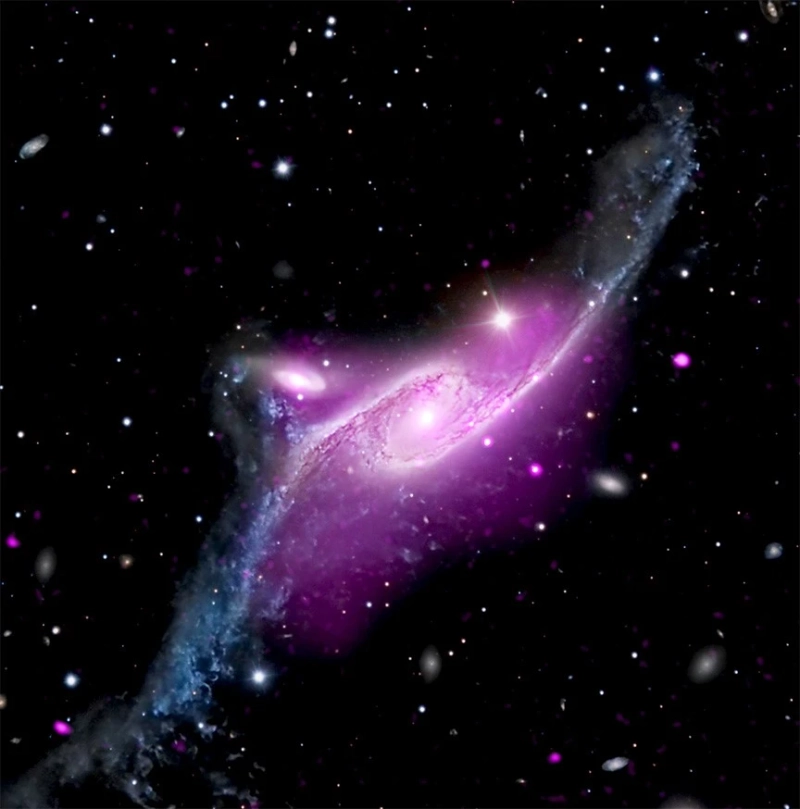Everything is not what it seems. Who knew the twinkling lights in the sky we call stars are made of plasma, and that some of them are actually hotter than the sun? We know little about the universe, and what we do know has been through the help of NASA. But what if some NASA photographs were kept secret for the greater good, and what if they were revealed now?
Something similar happens in Penny Fletcher's "The Sumerian Secret," where Ronnie Monroe, an ace reporter, becomes involved in the Sumerian texts discovered after the revelation of long-hidden NASA photographs. These 6,000-year-old tablets, which predates the Bible by thousands of years, have been kept secret by religious leaders and governments to avoid potential chaos.
Will Ronnie be intrigued by the mystery of the cosmos?
The question "What lies beyond our planet?" Has always captivated the human imagination. From ancient stargazers to modern astrophysicists, the cosmos represents the ultimate quest for knowledge and adventure. In recent decades, NASA has provided us with breathtaking photographs that inspire awe and fundamentally reshape our comprehension of space.
The world was astounded when the Hubble Space Telescope first captured the iconic "Pillars of Creation" in the Eagle Nebula. This image, showcasing towering columns of interstellar gas and dust, revealed the birthplace of stars in stunning detail. Beyond its beauty, the photograph showed that space is not just a static, empty void but a vibrant, evolving expanse filled with the raw materials of creation.
A New Perspective on Our Place in the Cosmos
NASA's images often provide a humbling perspective on our place in the universe. The "Pale Blue Dot," a photograph of Earth taken by the Voyager 1 spacecraft from about 3.7 billion miles away, reminds us of our planet's fragility and insignificance in the grand scheme. This speck of light, barely discernible against the vastness of space, underscores the unity of our world and the shared responsibility we have to protect it.
Unveiling the Invisible
One of NASA's most significant contributions to our understanding of space is its ability to capture images across the electromagnetic spectrum. While human eyes are limited to visible light, instruments like the Chandra X-ray Observatory and the James Webb Space Telescope (JWST) can detect infrared, ultraviolet, and X-ray emissions. These capabilities reveal phenomena that would otherwise remain hidden, such as the intense gravitational interactions in black holes or the formation of distant galaxies.
For instance, the JWST's infrared imaging has unveiled the structures of nebulae, revealing star formation regions obscured by dust in visible light. Such insights expand our knowledge and challenge existing theories, pushing the boundaries of astrophysics.
The Story Behind Every Image
Each photograph taken by NASA tells a story, often of immense scale and complexity. The detailed images of Mars, captured by rovers like Curiosity and Perseverance, vividly depict the planet's geology and climate history. These images suggest that Mars once had conditions suitable for life, raising compelling questions about the possibility of past or present extraterrestrial life.
Similarly, images from the Cassini mission to Saturn have provided unprecedented views of the planet's rings and moons. The discovery of water-ice plumes erupting from Enceladus, one of Saturn's moons, hints at the potential for subsurface oceans and, possibly, life.
Inspiring Future Explorations
NASA's photographs do more than expand our scientific knowledge; they inspire future generations of explorers, scientists, and dreamers. The awe-inspiring images from the Apollo missions, depicting astronauts walking on the moon, continue to ignite the imaginations of people worldwide.
The upcoming Artemis missions, aiming to return humans to the moon and eventually land on Mars, promise to deliver new iconic images that will further inspire and inform.
NASA's photographs are more than just pictures; they are windows into the universe that challenge our perceptions and expand our understanding. They reveal the beauty and complexity of space, offering insights into the origins and evolution of celestial bodies.
Talking of secrets, there's a lot that we don't know about our past, the present, and the future. In The Sumerian Secret, Penny Fletcher tells the story of a journalist who is all set to do a story on NASA findings. But beneath the surface, there's a lot that must be discovered. Some secrets might change the course of things before anyone knows it.
Fletcher draws inspiration from ancient texts and their hold over the powerful to weave an atmosphere of intrigue and mystique, simmering a passionate love story in the background. If you're seeking a well-rounded book combining a compelling plot, fascinating facts, and intense romance, The Sumerian Secret is the perfect choice!
Unveil the secrets—grab your copy now on Amazon!


